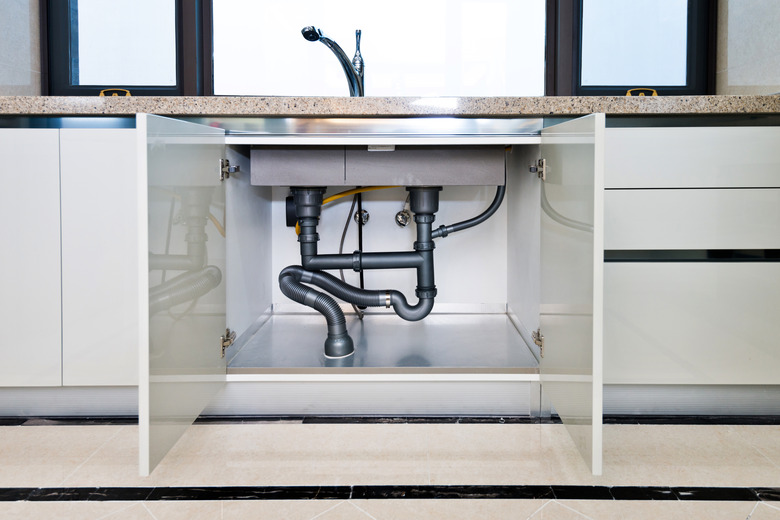How Cold Is It Before Pipes Burst?
A burst pipe wrecks havoc on your home. Not only do you have to replace the pipe itself, but you may also end up with serious water damage. When do you need to worry about pipes freezing and bursting? There's no magical outdoor temperature because several factors come into play when it comes to frozen pipes. Essentially, your pipes can freeze any time the air around them reaches the freezing point.
How Pipes Freeze
How Pipes Freeze
When the air temperature surrounding water pipes drops, the heat from the water inside the pipes transfers out to the cold air. This can happen any time the air surrounding the pipes reaches below freezing, which is 32 degrees Fahrenheit. As the water heat transfers to the cold air, the water temperature drops to the point that it starts to freeze. Ice in the pipes causes a pressure backup, which can cause the pipe to burst. The broken section often doesn't happen where the ice is but rather in the section with the increased water pressure.
Northern vs. Southern Locations
Northern vs. Southern Locations
Your specific climate can have an influence on when your pipes freeze. Homes in Northern climates feature building methods aimed at preventing pipe freezing. Since freezing temperatures are normal, builders locate pipes inside the insulation or add insulation around the pipes to keep them warm and prevent the heat transfer. In the South, where freezing temperatures aren't as common, pipes often run through non-insulated areas. When a cold snap hits, the pipes sit unprotected and potentially exposed to the freezing temperatures without insulation to hold in the heat.
For that reason, outdoor temperatures of 20 degrees Fahrenheit or lower in the South are generally considered the danger zone for pipe freezing. That doesn't mean your pipes are safe at 21 degrees Fahrenheit, and it doesn't mean that they'll definitely freeze if it's below 20 degrees Fahrenheit, but the risk becomes greater near that mark. Since pipes in the North generally have better protection, the outdoor temperature can dip much lower without frozen pipes unless there are other issues that leave the pipes exposed.
Home Features
Home Features
The structures around the pipes are often the biggest indicators of whether or not the risk of pipes bursting is high. Uninsulated areas, such as exterior walls, crawl spaces and attics, present the biggest threat for pipe freezing. A layer of insulation around the pipes can help in those cold areas.
Another potential issue is any type of hole to the outside, such as cracks or gaps in the exterior walls. Even a hole drilled for a cable or phone line can let cold exterior air seep into the walls where pipes are located. Areas exposed to flowing cold air may be particularly susceptible to freezing and bursting.
Tips for Protecting Your Pipes
Tips for Protecting Your Pipes
Take steps to prevent pipe bursting before the temperature dips below freezing. Avoid dropping your thermostat too low or shutting it off completely in cold weather. It's tempting to shut your heat off if you're gone to save money, but you may come home to burst pipes if you turn your furnace off completely.
Insulating your pipes is another way to prevent freezing. This can be especially important for pipes that run through the uninsulated areas. The insulation helps hold in the water's heat instead of letting it transfer to the freezing air surrounding it. Keep colder air out of your home by sealing up gaps, cracks and holes on exterior walls.
When temperatures drop, open the cabinet doors under your bathroom and kitchen sinks to let warm room air surround the pipes. Leaving a trickle of water running through pipes can help prevent pipes from bursting. You can still have frozen water inside the pipes, but the water trickling stops the buildup of pressure between the ice and the faucet that usually causes the rupture.
If you're going on an extended trip, keep your furnace on to keep the air temperature warmer than freezing. Another option is to drain the water out of your pipes so there's nothing left to freeze. You just need to shut off the main water supply coming into your home. Then, turn on all the water faucets until you run all of the water out of the system.
